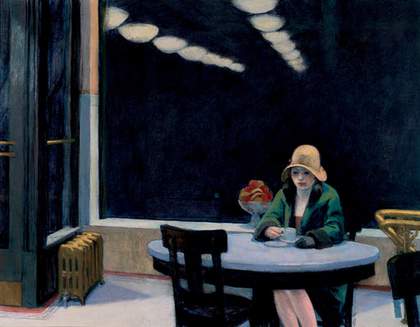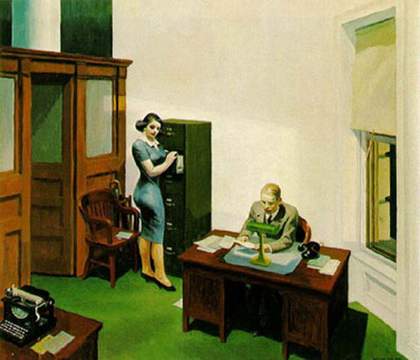
Edward Hopper Automat 1927
Edward Hopper (1882-1967) is considered to be one of America's greatest modern painters. This retrospective exhibition is the first major Hopper show to take place in the UK for over twenty years and presents many of his most iconic images.
Hopper's enduring popularity stems from his ability to stage scenes from everyday life in a way which also addresses universal concerns. His contemplative studies of modern life, captured within the stark interiors of automats, motel rooms, diners and movie theatres have a timeless quality, transcending the hour and the place to become profound statements about the human condition. It is this quality which has inspired generations of artists, writers and film makers including David Hockney, Mark Rothko, Alfred Hitchcock, Todd Haynes and Norman Mailer.
Hopper believed that the artist's goal was to reveal the truth about the everyday and the interior life of ordinary people. His paintings are flooded with penetrating beams of sun or moonlight which expose isolated figures in sparsely furnished rooms, portraits of aloneness, absorbed in themselves and detached from their world. Another major theme of Hopper's work is the use of American venacular architecture, often cropped in a way to increase psychological tension and heighten the feeling of isolation.
This exhibition features seventy works ranging from his early Parisian subjects to the poignant portraits of American life created more than sixty years later. It also presents his iconic streetscapes of New York, including the much-loved paintings Nighthawks and Automat.


